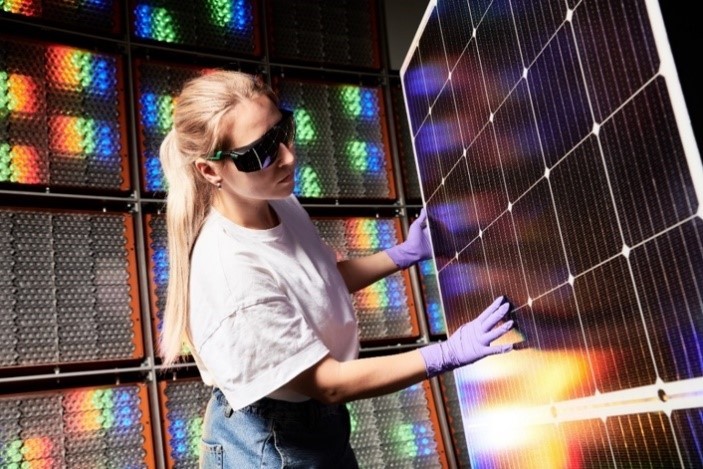Pioneer solar technologists Oxford PV have set a new record for the world’s most efficient solar panel, marking a crucial milestone in the clean energy transition.
The firm, a fourteen year spin-off from Oxford University, has allied with scientists at Germany’s Fraunhofer Solar Energy Institute to make a perovskite-based panel which achieves a record 25% conversion efficiency, advancing on conventional panels’ benchmarks in the low 20s.
Last May the firm achieved a world-beating rate of 28.6% for energy conversion by a single perovskite-coated cell. Small losses are incurred when as many as 72 cells are assembled into a single solar panel.
Greater things are yet to come. According to the company, stabilising the volatile perovskite mineral and layering it on standard silicon cells grant a theoretical maximum efficiency of over 43%, compared to less than 30% for standard silicon-based cells.
More efficient panels generate greater power from the same area, thus reducing the cost of electricity output, and making solar technology more attractive to investors and site owners.
Solar power accounted for an estimated three-quarters of renewable capacity additions worldwide in 2023. So panel efficiency offers transformative potential in developers’ drive worldwide towards an all-electric future.
Dr Chris Case, Oxford PV’s chief technology officer, said: “Our record-breaking solar panels demonstrate that we are on the cusp of the next solar revolution, which will be delivered, in part, by our tandem cell technology.
“Solar energy is currently among the most cost-effective and sustainable energy sources“, Case added. “Our continuous advancements in technology will further enhance module efficiency – producing more electricity from the same area – and extending their use to all market sectors from residential, commercial through to utility scale.
The manufacturer’s CEO David Ward added: “This new world record is a crucial milestone for Oxford PV, proving that our tandem solar cells can deliver record-breaking performance when assembled into solar panels.
“It is the first step in what will be a transformative 2024, as we begin to deliver market-ready panels from our factory in Germany and continue our global search for a new high volume manufacturing site which will enable us to bring our technology into the mainstream.”




